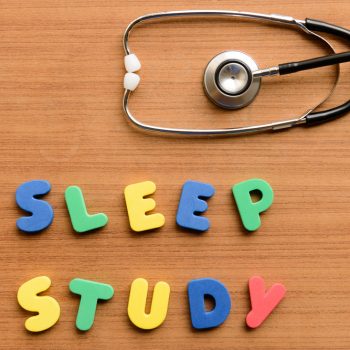How Age Affects Sleep Apnea: Understanding It Across the Lifespan
Sleep apnea doesn’t discriminate by age – it can affect anyone from young children to seniors. Sleep apnea syndrome, especially obstructive sleep apnea syndrome, is increasingly prevalent in middle-aged and older adults due to factors like aging, obesity, and chronic health conditions. However, how this sleep disorder presents itself, its underlying causes, and optimal treatment approaches can vary significantly depending on your age.
At Sac Sleep & Breathing, Sacramento, CA, sleep specialist, Dr. Scott Grivas specializes in treating sleep apnea across all age groups, providing personalized care that considers each patient’s stage of life and unique needs. Contact our Sacramento practice at (916) 735-4060 to learn how we can help you or your family member with age-appropriate sleep apnea treatment.
Pediatric Sleep Apnea
Pediatric sleep apnea affects approximately one to six percent of children and adolescents, especially obstructive sleep apnea. Unlike in adults, where obesity is often the primary cause, the main culprit in children is typically enlarged tonsils and adenoids.
Symptoms and Impact of Childhood Sleep Apnea
Children with sleep apnea may exhibit a range of symptoms that can significantly impact their daily lives:
- Snoring is a common sign of sleep-disordered breathing in children, often accompanied by pauses, snorts, or gasps. This disrupted breathing pattern can lead to poor sleep quality.
- Restless sleep and unusual sleep positions are frequently observed in children with sleep apnea. Children may sleep in odd positions to try to keep their airways open.
- Bedwetting, especially if the child was previously dry at night, can indicate sleep apnea. The condition can interfere with the body’s normal regulatory processes.
- Daytime sleepiness or behavioral problems are common. Unlike adults who typically become lethargic, children with sleep apnea often become hyperactive or exhibit behavior issues.
- Learning difficulties and poor academic performance may result from the cognitive impacts of sleep disorders like obstructive sleep apnea.
- Morning headaches can occur due to oxygen deprivation during sleep.
Untreated sleep apnea in children can have serious consequences. It may lead to growth delays as growth hormone is primarily secreted during deep sleep. Cognitive development can be impaired, affecting a child’s ability to learn and perform academically. Additionally, the strain on the cardiovascular system can have long-term health implications.
Diagnosis and Treatment of Sleep Apna in Children
Diagnosing sleep apnea in children often involves a multi-faceted approach:
- A thorough physical examination is conducted, paying special attention to the size of the tonsils and adenoids.
- A sleep study (polysomnography) may be recommended to monitor breathing patterns, oxygen levels, and brain activity during sleep.
- Home sleep apnea testing (HSAT) can be a convenient and effective alternative to traditional in-laboratory polysomnography, especially for those who may experience barriers to undergoing testing in a clinical setting.
- An assessment of daytime symptoms and behavior is crucial, often involving input from parents and teachers.
Treatment options for children with sleep apnea are tailored to address the underlying cause:
- Adenotonsillectomy, the removal of tonsils and adenoids, is often the first-line treatment for children. This surgery can be highly effective in resolving sleep apnea symptoms, especially for obstructive sleep apnea.
- Continuous Positive Airway Pressure (CPAP) therapy may be recommended if surgery is not appropriate or doesn’t fully resolve the issue. Special masks designed for children are available.
- Weight management programs can be beneficial for obese children, as excess weight can contribute to sleep apnea, especially obstructive sleep apnea.
- Medications to reduce inflammation in the nasal passages may be prescribed, especially if allergies are contributing to obstructive sleep problems.
Sleep Apnea in Adults
In adults, obesity is a significant risk factor for sleep apnea, especially obstructive sleep apnea. As individuals age, they face additional sleep apnea risks due to anatomical changes and comorbid health conditions. In middle-aged and older adults, the prevalence of obstructive sleep apnea increases, affecting up to 30 to 60 percent of this population. Severity also rises with age, with the majority of moderate to severe sleep apnea cases occurring in those over 40.
Symptoms and Impact of Sleep Apnea in Adults
Adult symptoms of sleep apnea can be quite different from those seen in children:
- Loud snoring is often the most noticeable symptom of sleep apnea in adults, frequently reported by bed partners.
- Observed episodes of stopped breathing during sleep can be frightening for partners and indicate sleep-disordered breathing.
- Excessive daytime sleepiness is a common sign of sleep-disordered breathing, affecting work performance and quality of life.
- Morning headaches may occur due to oxygen deprivation during sleep.
- Difficulty concentrating and memory problems are clear signs of sleep apnea, which can impact both personal and professional life.
- Mood changes and irritability are frequently reported before sleep apnea diagnoses, often stemming from poor sleep quality.
Untreated sleep apnea in adults can have serious health consequences:
- With sleep apnea, there’s an increased risk of hypertension and cardiovascular disease, as the body experiences stress during apnea episodes.
- Metabolic disorders, including type 2 diabetes, are more common in individuals with untreated sleep apnea.
- Cognitive decline may accelerate with sleep apnea, particularly in older adults.
- Quality of life and productivity can be significantly reduced by sleep apnea.
Diagnosis and Continuous Positive Airway Pressure Treatment for Sleep Apnea
Diagnosing sleep apnea in adults typically involves:
- A comprehensive sleep study (polysomnography) is performed to monitor various physiological parameters during sleep.
- Assessment of symptoms and sleep apnea risk factors through questionnaires and interviews.
- Cardiovascular and metabolic evaluations are performed to assess related health risks.
- The apnea-hypopnea index (AHI) is used to assess the severity of obstructive sleep apnea by measuring the frequency of apnea and hypopnea episodes during sleep.
Treatment options for adults with sleep apnea are diverse and can be tailored to individual needs:
- CPAP therapy remains the gold standard sleep apnea treatment. It involves wearing a mask that delivers pressurized air to keep the airway open during sleep.
- Oral appliance therapy, using devices that reposition the jaw, can be effective for mild to moderate cases.
- Weight loss and lifestyle modifications are often recommended, as they can significantly improve symptoms.
- Positional therapy, which involves techniques to avoid sleeping on the back, can help in some cases.
- Surgical interventions may be considered in specific cases where anatomical issues are contributing to sleep apnea.
Age-Specific Considerations of Sleep Apnea
Children and Adolescents
Treatment for younger patients focuses on ensuring proper growth and development. Parents and caregivers play a crucial role in managing the condition and adhering to treatment plans. Academic performance is closely monitored, as sleep apnea can significantly impact learning and behavior.
Middle-Aged Adults
For this age group, balancing treatment with work and family responsibilities is key. The potential impact on career and relationships is considered when developing treatment plans. Managing associated health risks, such as hypertension, is also a priority.
Older Adults
In treating older patients, healthcare providers must consider multiple medical conditions and potential medication interactions. Awareness and routine screening for sleep apnea syndrome is crucial, as this condition is increasingly prevalent among middle-aged and older adults. There’s a strong focus on fall prevention and maintaining cognitive health. Treatments may need to be adapted for ease of use and to ensure compliance.
Risk Factors for Sleep Apnea
Several risk factors contribute to the development of sleep apnea, making some individuals more susceptible to this sleep disorder. Understanding these risk factors can help in early identification and management.
Age and Obesity
- Age: The risk of developing sleep apnea increases with age, with the majority of cases occurring in people over 40. As we age, changes in muscle tone and other physiological factors can contribute to airway obstruction.
- Obesity: Excess weight, particularly around the neck and throat, can significantly increase the risk of sleep apnea by causing the airway to narrow and collapse. This is one of the most common risk factors for obstructive sleep apnea.
- Family History: Genetics can play a role in sleep apnea. A family history of the condition can increase an individual’s risk, suggesting a hereditary component.
- Smoking: Smoking can cause inflammation and fluid retention in the upper airway, increasing the risk of sleep apnea. Smokers are more likely to develop obstructive sleep apnea compared to non-smokers.
- High Blood Pressure: There is a strong link between high blood pressure and sleep apnea. The stress and strain on the cardiovascular system during apnea episodes can exacerbate hypertension, particularly in older adults.
- Diabetes: People with diabetes are at a higher risk of developing sleep apnea. The relationship between these conditions is complex, involving factors like obesity and metabolic dysfunction.
- Neck Size: A larger neck circumference can indicate excess soft tissue that might block the airway during sleep. Men with a neck size greater than 17 inches and women with a neck size greater than 16 inches are at higher risk of obstructive sleep apnea.
- Sleep Position: Sleeping on one’s back can cause the tongue and soft palate to relax and block the airway, increasing the likelihood of sleep apnea episodes. Positional therapy can sometimes help mitigate this obstructive sleep apnea risk.
By recognizing and addressing these risk factors, individuals can take proactive steps to manage or prevent sleep apnea, improving their overall health and quality of life.
Prevention and Management
Across all age groups, certain lifestyle factors can help prevent or manage sleep apnea:
- Maintaining a healthy weight is crucial, as excess weight is a significant risk factor for sleep apnea.
- Establishing good sleep habits and routines can improve overall sleep quality and reduce sleep apnea symptoms.
- Regular physical activity, appropriate for age and ability, can help maintain a healthy weight and improve sleep quality.
- Avoiding alcohol and sedatives before bedtime is important, as these substances can relax throat muscles and worsen obstructive sleep apnea symptoms.
- Sleep position training, particularly side-sleeping, can help keep airways open during sleep.
- For children, additional preventive measures include promptly addressing allergies and respiratory issues and closely monitoring growth and development.
- Adults should consider implementing stress management techniques, attending regular medical check-ups, and developing strategies to maintain a healthy work-life balance.
Frequently Asked Questions
At what age can sleep apnea first appear?
Sleep apnea can occur at any age, even in infancy. While risk factors and presentation can vary significantly by age group, sleep-disordered breathing has been observed in children as young as newborns.
Early identification and treatment are crucial, as untreated sleep apnea in children can lead to growth delays, cognitive impairments, and long-term cardiovascular implications. Pediatric sleep apnea is often linked to enlarged tonsils and adenoids, rather than obesity which is a primary driver in adult cases.
Does sleep apnea always get worse with age?
Not necessarily. While age is considered a risk factor for sleep apnea, especially obstructive sleep apnea, the progression and severity of the condition can be influenced by various factors. Proper treatment, weight management, and lifestyle modifications can help control symptoms across the lifespan.
In some cases, sleep apnea may remain stable or even improve with age, depending on the underlying causes and an individual’s response to interventions. Regular monitoring by a healthcare provider is important to assess any changes in sleep apnea over time and adjust the treatment plan accordingly.
Are sleep apnea treatment options different for different age groups?
Yes, sleep apnea treatment approaches are customized based on the patient’s age, specific symptoms, underlying causes, and individual health conditions. Children may require different CPAP settings or mask options compared to adults. Surgical interventions like adenotonsillectomy are more common in pediatric cases, while oral appliances and positional therapy tend to be more relevant for older patients.
Treatment plans for seniors must also account for medication interactions and cognitive impacts. Ultimately, a personalized, multifaceted approach is essential to effectively manage sleep apnea across all age groups.
Get Age-Appropriate Sleep Apnea Care, Call Today!
Understanding how sleep apnea affects different age groups is crucial for effective treatment. At Sac Sleep & Breathing, Dr. Grivas provides comprehensive care tailored to patients of all ages. Contact us at (916) 735-4060 to schedule a consultation and learn about age-appropriate sleep apnea treatment options. We welcome patients from Sierra Oaks, Woodside Condo, Campus Commons, and throughout the Sacramento, CA, area.
